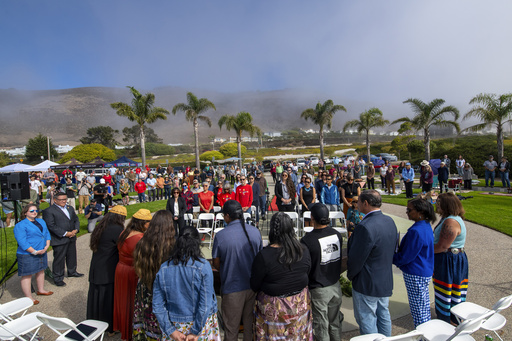
For over 10,000 years, Native Americans have inhabited the central coast of California, an area renowned for its stunning landscapes and vibrant marine ecosystems. In an unprecedented partnership, this region will soon become part of a new national marine sanctuary that will be jointly managed by federal authorities and the Indigenous peoples of the area.
The establishment of the Chumash Heritage National Marine Sanctuary, recently announced by the Biden administration, marks a historic milestone as it is the first marine sanctuary in the United States to be nominated by a tribal group. The sanctuary will empower the Chumash people, who once formed the largest cultural group in California, to actively participate in the preservation efforts of this marine environment.
Spanning 116 miles (approximately 187 kilometers) of coastline, this sanctuary will encompass over 4,500 square miles (around 11,655 square kilometers) of coastal and offshore waters, which are home to a variety of marine life facing growing threats from climate change and human-induced pollution. The National Oceanic and Atmospheric Administration (NOAA) has stated that the sanctuary’s designation will take effect after a 45-day review period by Congress.
The Chumash tribes, including the federally recognized Santa Ynez Band of Chumash Indians, have long relied on the ocean for resources such as fishing and shellfish. Currently, many in the community are engaged in environmental monitoring and advocacy, emphasizing the importance of sustainable practices in their interactions with the marine ecosystem.
Future initiatives may involve collaborations on projects like coastal signage and scientific research focused on submerged historic Indigenous sites. Kenneth Kahn, chairman of the Santa Ynez Band, highlighted the significance of these waterways to the Chumash heritage, stating, “These are areas where our tribal people have thrived and lived for many years.”
The creation of this sanctuary follows nearly a decade’s efforts, originating from a nomination made by the late Chief Fred Collins of the Northern Chumash Tribal Council in 2015. Violet Sage Walker, chairwoman of the Northern Chumash Tribal Council, reflected on promises made to Collins, vowing to see the sanctuary through after his passing three years ago.
While other marine sanctuaries have included tribal participation, this sanctuary distinguishes itself by incorporating Indigenous voices from the outset in a way that is explicitly outlined in its management plan. Walker emphasized the importance of this unique arrangement.
Reflecting a broader Land Back movement, wherein Indigenous groups reclaim authority over their historic territories, this partnership embodies a shift toward re-establishing Indigenous stewardship over natural resources. Earlier this year, the Yurok Tribe achieved a landmark agreement with the National Park Service to jointly manage tribal land in Northern California.
Geographically, the Chumash marine sanctuary stretches from the San Luis Obispo County region to the boundary of the Channel Islands National Marine Sanctuary located off Santa Barbara’s coast. According to Stanford University professor Stephen Palumbi, the sanctuary is significant due to its diverse ecological zones that combine elements from both the northern and southern California coast.
The sanctuary is a refuge for several endangered species, including snowy plovers, southern sea otters, leatherback sea turtles, abalone, and blue whales, and features ecologically important formations like the Rodriguez seamount, an underwater volcanic structure. Palumbi and his colleagues recognized the value of Indigenous knowledge during their research on grunions, fish that come ashore to spawn.
The establishment of this national marine sanctuary aligns with the White House’s America the Beautiful initiative, aimed at conserving at least 30% of U.S. lands and waters by the year 2030. Initially, there were hopes that the sanctuary’s boundaries would extend further north, but after discussions with wind energy companies, NOAA modified the plans to exclude certain areas designated for offshore wind development while still allowing for potential future sanctuary expansions.
“It’s really a balancing act,” noted Paul Michel, NOAA regional policy coordinator, highlighting the need to harmonize renewable energy ambitions with conservation goals. The management plan includes provisions for co-stewardship, ensuring that representatives from the Santa Ynez Band of Chumash Indians have a seat at the advisory table and that Indigenous cultural perspectives will be integral to decision-making.
Walker concluded by stating, “By protecting our homeland, we also safeguard our spiritual connections to our ancestors and future generations. This initiative represents a legacy that will endure well beyond my own lifetime.”
